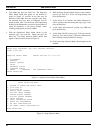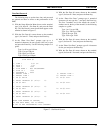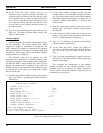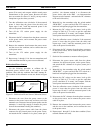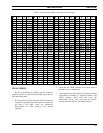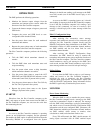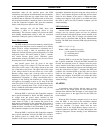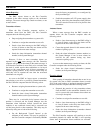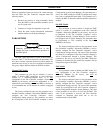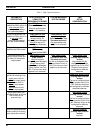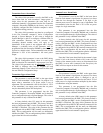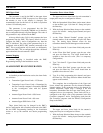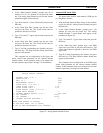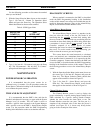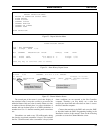
LBI-39128 OPERATION
24
Alarm Reporting
The PMU reports alarms to the Site Controller
computer in the status message replies to the on-channel
messages. The status message may contain no alarms, or one
or more alarms.
Transmitter Alarms
When the Site Controller computer receives a
transmitter alarm from the PMU, the Site Controller
computer takes the following action:
• Stops assigning that transmitter to system calls.
• Continues to assign that transmitter to test calls.
• Sends a clear alarm message to the PMU telling it
to clear all alarms so that only new alarms will be
reported in the next status message.
• Sends the alarm information (transmitter channel
number) to the System Manager.
However, if three or more transmitter alarms are
reported in the same status message, the Site Controller
computer will ignore all the alarms in that status message. It
is felt that this condition is more likely to be a mistake than
the truth (it would require three transmitters to be keyed
almost at the same instant and all three transmitters to
indicate a power problem). If any of these alarms really are
valid, they will be reported the next time the associated
transmitters are assigned.
As soon as the PMU no longer reports a transmitter
alarm during a test call to a previously alarmed transmitter,
the Site Controller computer takes the following action:
• Resumes assigning that transmitter to system calls.
• Continues to assign that transmitter to test calls.
• Sends the alarm cleared information (transmitter
channel number) to the System Manager.
There may be a noticeable delay between when the
problem is corrected and the System Manager sees the
transmitter alarm indication cleared, because the alarm
condition is not considered cleared until a successful test
call has been placed to that transmitter. This delay may be
reduced by doing one or both of the following:
• Set the Background Testcall Interval to the
minimum of one minute. This may be specified in
the Site Controller computer’s Personality PROMs
(must be factory programmed), or re-configured by
the System Manager.
• Switch the transmitter off (12V power supply), then
back on, after fixing the transmitter alarm problem.
This will cause the next test call to be placed to that
transmitter.
Antenna Alarms
When a status message from the PMU contains an
antenna alarm, the Site Controller computer takes the
following action:
• Sends a clear alarm message to the PMU telling it
to clear all alarms so that only new alarms will be
reported in the next status message.
• Counts the reported alarms for this antenna and the
number of polling cycles.
• Sends the alarm information (antenna number) to
the System Manager if two or more alarms are
received for this antenna during any three
consecutive polling cycles.
As soon as that antenna stops causing an alarm, the Site
Controller computer takes the following action:
• Sends the alarm cleared information (antenna
number) to the System Manager.
Excessive Alarms
If the quantity of transmitter channels that are not in use
for system calls (due to PMU transmitter alarms) exceeds
50% of the total number of equipped transmitter channels,
the Site Controller computer takes the following action:
• Suspends the practice of using transmitter alarms
from the PMU to take transmitter channels out of
use for system calls (and reinstates those taken out
of use up to that point).
• Continues to assign all transmitters to test calls.
• Sends a clear alarm message to the PMU telling it
to clear all alarms so that only new alarms will be
reported in the next status message.
• Sends the alarm information (transmitter channel
number) to the System Manager.
The Site Controller computer will continue to use the
transmitter channels for which the PMU is still reporting
alarms until all transmitter alarm conditions are corrected.



